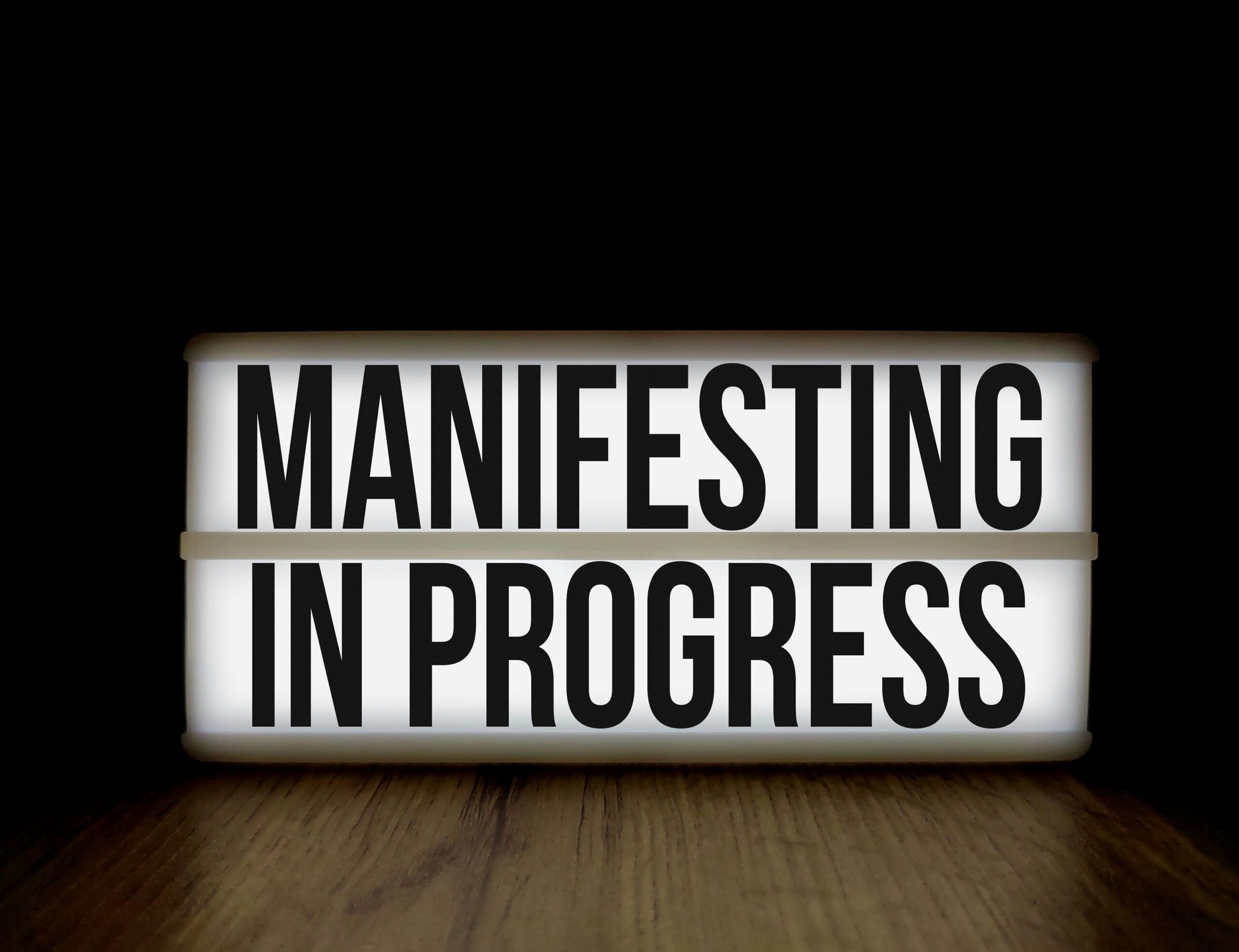Learning to trust the natural flow of money and life can be one of the most liberating decisions you’ll ever make for your financial well-being.
In our modern world, we’re conditioned to believe that financial success requires constant vigilance, rigid control, and an iron grip on every dollar that passes through our hands. We create elaborate budgets, obsess over market fluctuations, and lose sleep worrying about economic uncertainties. But what if this approach is actually limiting our financial potential rather than enhancing it?
The concept of “trusting flow” in personal finance might sound counterintuitive at first. After all, aren’t we supposed to track every expense, plan meticulously, and maintain strict discipline? While these practices have their place, an excessive need for control often stems from fear—fear of scarcity, fear of making mistakes, and fear of the unknown. This fear-based approach to money management can create stress, block opportunities, and prevent us from seeing the bigger picture of wealth creation.
💰 Understanding the Paradox of Financial Control
There’s a fascinating paradox in personal finance: the harder you grip something, the more likely it is to slip through your fingers. When we operate from a place of scarcity and excessive control, we tend to make decisions based on fear rather than wisdom. We might miss investment opportunities because we’re paralyzed by what-ifs, or we might hold onto depreciating assets simply because letting go feels uncomfortable.
Trusting flow doesn’t mean abandoning responsibility or becoming financially reckless. Instead, it’s about finding a balanced approach that combines awareness with flexibility, planning with adaptability, and discipline with trust. It’s recognizing that money, like water, flows more freely when it’s not constantly restricted by rigid barriers.
Think about entrepreneurs who’ve built successful businesses. Most will tell you that their breakthrough didn’t come from controlling every variable, but rather from recognizing opportunities, trusting their instincts, and allowing their ventures to evolve organically. They planned, yes—but they also adapted, pivoted, and sometimes completely changed direction when the flow of circumstances indicated a better path.
🌊 The Psychology Behind Letting Go
Our relationship with control often stems from childhood experiences and societal conditioning. Many of us grew up hearing messages about money being scarce, difficult to earn, and easy to lose. These beliefs become deeply embedded in our subconscious, shaping our financial behaviors as adults. When we operate from this scarcity mindset, we naturally try to control everything as a protective mechanism.
However, psychological research shows that excessive control attempts often lead to increased anxiety and reduced life satisfaction. When applied to finances, this hypervigilance can manifest as hoarding behavior, missed opportunities, strained relationships around money, and chronic financial stress—even when one’s actual financial situation is stable or positive.
Trusting flow involves developing a new relationship with uncertainty. It means understanding that while we can’t control economic cycles, market movements, or unexpected expenses, we can control our responses to these events. This shift in perspective is profoundly empowering because it places our agency where it actually belongs—in our attitudes, decisions, and actions rather than in external circumstances.
Breaking Free from Scarcity Thinking
Scarcity thinking operates on the belief that there’s never enough—not enough money, not enough opportunities, not enough time. This mindset creates a self-fulfilling prophecy where we’re constantly on the defensive, trying to protect what little we have. In contrast, an abundance mindset recognizes that while resources may be finite in any given moment, opportunities for wealth creation are continuously emerging.
When you trust the flow, you begin to notice patterns that scarcity-minded individuals miss. You see how money you invest in education returns multiplied through increased earning potential. You recognize that spending on experiences often brings more lasting satisfaction than hoarding cash. You understand that calculated risks, rather than being threats to your security, are actually pathways to growth.
🔄 Practical Ways to Embrace Financial Flow
Transitioning from control-based to flow-based financial management requires both mindset shifts and practical behavioral changes. Here are actionable strategies to begin this transformation:
Automate Your Financial Foundations
One of the most powerful ways to trust flow is through automation. When you automate savings, investments, and bill payments, you remove the need for constant decision-making and control. This creates a system that works in the background, allowing money to flow to where it needs to go without requiring your constant attention.
Set up automatic transfers to your savings account on payday. Arrange for retirement contributions to be deducted before you see the money. Schedule recurring investments that dollar-cost average into the market regardless of short-term fluctuations. These automated systems embody trusting flow—they keep moving forward regardless of your momentary fears or market anxieties.
Create Flexible Financial Goals
Traditional financial planning often involves setting rigid goals with specific dollar amounts and dates. While having targets is important, being too attached to specific outcomes can cause stress and disappointment. Instead, create directional goals with flexible pathways.
Rather than saying “I must have exactly $500,000 saved by age 50,” consider “I’m building substantial wealth for my future, adjusting my strategies as circumstances evolve.” This approach maintains intention while allowing for the natural fluctuations of life and markets. It acknowledges that the path to financial security isn’t linear and that flexibility is a strength, not a weakness.
Practice Regular Financial Check-ins (Not Obsessive Monitoring)
There’s a difference between awareness and obsession. Instead of checking investment accounts daily or scrutinizing every transaction multiple times per week, establish regular check-in periods—perhaps monthly or quarterly. During these sessions, review your overall financial picture, assess progress toward goals, and make any necessary adjustments.
This scheduled approach prevents both neglect and obsession. You remain informed and engaged with your finances while avoiding the anxiety that comes from constant monitoring. It’s like tending a garden—you water, weed, and nurture regularly, but you don’t stand over the plants every hour demanding they grow faster.
✨ The Role of Intuition in Financial Decisions
In our data-driven age, we’re taught to trust only quantifiable information and logical analysis. While rational thinking certainly has its place in financial planning, completely dismissing intuition means ignoring a valuable decision-making tool that our brains have evolved over millennia.
Intuition isn’t mystical or irrational—it’s your brain’s ability to rapidly process patterns and information from your accumulated experiences. When something “feels right” or “feels off” about a financial decision, that feeling is often your subconscious recognizing patterns based on previous experiences, knowledge, and observations you may not consciously remember.
Trusting flow involves learning to listen to these intuitive signals while still doing due diligence. If an investment opportunity seems too good to be true and your gut says something’s wrong, that intuition deserves attention alongside the analytical research. Conversely, if an unconventional opportunity excites you and aligns with your values, that positive intuition might be recognizing potential that spreadsheets alone can’t capture.
Balancing Logic and Feeling
The most effective financial decision-making combines both rational analysis and intuitive wisdom. Before making significant financial choices, gather relevant data and analyze it logically. But also take time to sit with the decision and notice how it feels. Does it create anxiety or excitement? Does it align with your values and long-term vision? Both sources of information are valuable.
This balanced approach prevents two common pitfalls: making purely emotional decisions that ignore practical realities, and making purely logical decisions that ignore important contextual factors that logic alone can’t capture. When logic and intuition align, you can move forward with confidence. When they conflict, it’s worth pausing to understand why before proceeding.
🚀 How Letting Go Accelerates Wealth Building
Counterintuitively, releasing excessive control can actually accelerate wealth building. When you’re not paralyzed by fear of making mistakes, you’re more likely to take calculated risks that offer higher returns. When you’re not micromanaging every dollar, you free up mental energy for creative thinking, relationship building, and strategic planning—activities that often generate more wealth than penny-pinching ever could.
Consider the difference between these two investors: One constantly monitors their portfolio, panics during downturns, and frequently moves money based on market fear or greed. The other establishes a diversified portfolio aligned with their risk tolerance and time horizon, then largely leaves it alone except for annual rebalancing. Research consistently shows that the second approach typically outperforms the first, precisely because it trusts the flow of long-term market growth rather than trying to control short-term fluctuations.
The Compound Effect of Reduced Financial Stress
Chronic stress has real costs—both health-related and financial. When you’re constantly worried about money, your decision-making suffers, your health may decline (leading to medical expenses), and your relationships can become strained. These factors all have financial implications that often outweigh whatever benefits excessive control might theoretically provide.
By trusting flow and releasing unnecessary control, you reduce this stress load. Better health means lower medical costs and sustained earning capacity. Improved mental clarity leads to better career decisions and business opportunities. Stronger relationships create networks that often lead to professional advancement and collaborative ventures. The compound effect of these benefits can significantly enhance your financial trajectory.
🌱 Cultivating a Flow-Based Money Mindset
Developing a flow-based approach to finances is an ongoing practice, not a one-time decision. Like building any new habit, it requires patience, self-compassion, and consistent effort. Here are daily practices that can help reinforce this mindset:
- Morning intention setting: Before checking your accounts or thinking about financial tasks, set an intention for how you want to relate to money today—perhaps choosing words like “trust,” “abundance,” or “flow.”
- Gratitude practice: Regularly acknowledge what’s working in your financial life. This shifts focus from scarcity to abundance and helps you recognize positive patterns already present.
- Reframe setbacks: When financial challenges arise, practice seeing them as redirections rather than failures. Ask “what is this teaching me?” instead of “why is this happening to me?”
- Celebrate movement: Acknowledge progress regardless of size. Paid off $50 of debt? That’s money flowing in the right direction. Received an unexpected refund? The universe is demonstrating abundance.
- Release comparison: Someone else’s financial situation has nothing to do with yours. Their success doesn’t diminish your potential, and their struggles don’t enhance your position. Stay focused on your own flow.
Building Financial Resilience Through Flexibility
Resilience isn’t about being rigid enough to withstand any storm—it’s about being flexible enough to bend without breaking. In financial terms, this means building systems that can adapt to changing circumstances rather than plans that collapse when reality doesn’t match projections.
Create multiple income streams rather than depending entirely on a single source. Maintain emergency reserves that provide breathing room when unexpected expenses arise. Develop transferable skills that allow you to pivot if your industry or role becomes obsolete. These strategies embody trusting flow—they prepare you for uncertainty without trying to eliminate it entirely.
🎯 When Control Is Actually Helpful
Trusting flow doesn’t mean abandoning all structure or discipline. There are areas where appropriate control and boundaries actually support flow rather than restricting it. Understanding this distinction is crucial for implementing a balanced approach.
Controlling your spending relative to your income is essential—spending more than you earn isn’t trusting flow, it’s creating chaos. Setting boundaries around consumer debt protects your financial wellbeing. Establishing clear financial priorities helps money flow toward what matters most rather than dissipating randomly.
The key difference is between control that creates structure supporting flow (like riverbanks that guide water’s movement) versus control that attempts to completely contain or stop flow (like a dam that blocks water entirely). One works with natural tendencies; the other fights against them, requiring constant energy and eventually failing when pressure becomes too great.

💫 Transforming Your Financial Future Starting Today
The journey from control-based to flow-based financial management doesn’t require dramatic action or perfect execution. It begins with small shifts in perspective and gentle adjustments to your habits. Start by identifying one area where you’re holding too tightly—perhaps obsessively checking your investment accounts, or refusing to spend on anything non-essential even when you can comfortably afford it.
Choose one practice from this article that resonates with you and implement it for the next 30 days. Notice what changes—not just in your account balances, but in your stress levels, your relationship with money, and your openness to opportunities. Trusting flow is as much about quality of life as it is about financial outcomes, and often improvements in the former naturally lead to enhancements in the latter.
Remember that financial transformation isn’t about reaching a destination where you’ve finally “made it” and can relax forever. It’s about developing a sustainable, enjoyable relationship with money that supports you throughout life’s inevitable changes. When you trust flow, you’re not giving up agency—you’re actually reclaiming it from fear and placing it in wisdom.
Your financial future isn’t something you need to force into existence through sheer willpower and rigid control. It’s something you cultivate through intentional choices, strategic flexibility, and trust in your ability to navigate whatever comes. The power isn’t in controlling every variable—it’s in becoming someone who can work skillfully with whatever variables arise. That’s the true transformation that comes from embracing the power of trusting flow.
As you move forward, be patient with yourself. Decades of conditioning toward control won’t disappear overnight, and that’s perfectly fine. Each moment you choose trust over fear, flexibility over rigidity, and flow over force, you’re rewiring your relationship with money and opening new possibilities for your financial future. The journey itself becomes part of the reward when you’re no longer constantly fighting against the current but instead learning to navigate it with skill, confidence, and grace. 🌊
Toni Santos is a personal growth strategist and wealth alignment researcher dedicated to helping people connect mindset, habits, and money with purpose. With a focus on abundance psychology and intentional living, Toni explores how beliefs, behavior, and clarity turn goals into sustainable prosperity. Fascinated by financial psychology and high-performance routines, Toni’s journey bridges coaching, behavioral science, and practical frameworks. Each guide he shares is an invitation to design a life by intention—where daily actions align with values, and values align with long-term wealth. Blending mindset work, habit design, and evidence-based strategy, Toni studies how identity shifts, focus systems, and disciplined execution create compounding results. His work champions the idea that true abundance is built from the inside out—through awareness, alignment, and consistent action. His work is a tribute to: An abundance mindset grounded in gratitude, vision, and responsibility Financial psychology that transforms behavior into smart decisions Goal-oriented living powered by clear systems and repeatable habits Whether you’re redefining success, aligning money with meaning, or building habits that last, Toni Santos invites you to grow with intention—one belief, one plan, one aligned step at a time.




